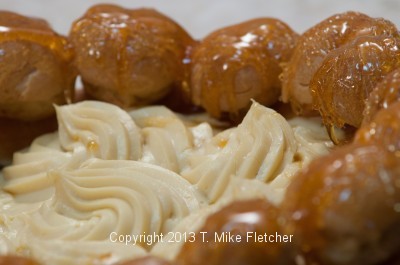
This was one of the chapters in my first book, "The New Pastry Cook". As with every other chapter, the information in front of the chapters is key to the success of the pastry. Here is the chapter header.
"Chou paste is one of, if not the most versatile basic pastries in the entire repertoire of pastry making. By definition, chou paste is really a thick sauce and not a pastry at all. It can be sweet or savory, baked, poached or deep fried, made free-form or piped into shapes. Alone, it maybe filled and/or sauced, or it can be combined with other pastries to make elaborate desserts. The leftover paste can be turned into delicious hors d'oeuvres. It takes its name from the french word chou, which means cabbage, the best- known shape of chou paste, the cream puff, was thought to resemble a small cabbage.
Chou paste consists first of water, butter, and salt, which are brought to a vigorous boil. The flour is then added all at once and the mixture is stirred until the flour absorbs the water and a solid ball is formed. This is the panade. At this point it is very important to continue cooking the panade over high heat, mashing it against the bottom of the pan and turning it frequently for 1 minute to dry it out. There will be a film on the bottom of the pan when it is done. The drier the paste, the more egg it will accept. The more egg, the lighter and higher the puff, the drier the inside, and the crisper the shell will be. Under high oven heat, steam will be produced from the water and the egg whites, causing the pate to explode and forming a cavity inside.
The usual formula is equal parts of water and flour by volume. The usual flour is all purpose flour. However, by changing the formula a much drier panade can be obtained with the result that there will be very little if any uncooked paste inside after the chou is baked. In my formula, the flour has been increased in proportion to the water. In addition, bread flour is specified, as its strength can support the high puff until the heat can set it. Weaker flours can often puff to the same heights, bur sink before the heat can set it. The panade being drier and made with bread flour can accept more eggs. To insure a really crisp finished product that will not become soggy or soft, the butter has been decreased. Many recipes suggest water or milk. I have found that milk does not produce as crisp a puff and that chou paste made with milk has a tendency to expand horizontally in the oven, rather than vertically only.
After the panade is made and dried, it is flattened in the pan and left to cool for 5 minutes so the eggs will not cook when they are added. Sidestepping tradition, my testing showed no difference if the eggs were added all at once or one at a time. When the eggs are initially added the mixture will appear curdled and look rather messy. However, with continued beating, it will come together in a creamy, shiny mass. For maximum height, it should be used immediately. However, the surface can be covered with plastic wrap and the paste can be held for several hours before shaping and baking.
There is much mystique and blind following of tradition in the world of food and nowhere more so than pastry. In the past, for instance, a wooden spoon with which to stir chou paste was considered de rigueur. For reasons explained on page 44, I do not recommend wooden spoons. [Wooden spoons become impregnated with the flavors of dishes in which they have been used. If the same spoons are used to prepare a delicate pastry cream or creme anglaise, those very onions and garlic that were so delicious in other dishes will be transferred to your delicate creams. There are many types of utensils, including high-impact, heatproof plastic, that are suitable for use when metal spoons are not recommended. if you feel you must use wooden spoons, keep those for pastry making separate from any other wooden spoons used in the kitchen.] I do suggest a non-aluminum pan, as aluminum can discolor the panade.
I also found no difference if the eggs were beaten in by hand, with a mixer, or in the food processor. For a single recipe, the eggs can be added to the pan in which the panade was made and beaten in with a hand mixer. If the recipe is doubled, a heavier mixer or the food processor is recommended. After the panade has cooled for 5 minutes, transfer it to the mixing bowl or processor and beat in the eggs.
A piping bag and various tips are the easiest way to assure uniform shapes, but the paste can also be formed with a spoon. As is often true in baking, steam in the oven helps the dough rise and also produces the desired crispness. It also adds a lovely sheen to the baked product that is otherwise absent. In professional ovens, steam can be injected. However, at home, there is a way to produce the desired steam. Measure parchment paper to fit the size of the baking sheet. If the recipe calls for a circle or other shape to be drawn on it, do it at this point. Then gently wad the parchment paper and soak it in a bowl of arm water for 5 to 7 minutes. Because parchment paper has been impregnated with oil, it will initially resist the water which is why it needs to soak. Remove it from the water and shake it very gently, but do not shake off all the clinging water. Smooth it on a baking sheet and proceed with shaping the chou paste as the recipe directs. The parchment, wet or dry, also allows the paste to cling to it and expand upward. This is particularly helpful because you will have a shape of the size as you piped it at the base, but much higher. Buttering a baking sheet is not recommended, as it provides a slippery surface that causes the paste to expand sideways.
The chou paste is baked on the middle rack of the oven initially at high heat. After it has set the heat is lowered so it can begin drying out. Do not open the oven door before the baking time is up. After the item is baked, it is removed from the oven, slit in one or several places, depending upon the size and returned to the oven. the oven is turned off and the door is held ajar with a wooden spoon. The chou paste is left in the one for 10 minutes then removed and cooled on a rack.
Use the baked chou paste the day it is made or freeze it after baking. Defrost on a rack and crisp in a 350-degree oven for 5 to 10 minutes."
The information in this blog is as true today as it was in 1986 when the book was published. Gateau St. Honore is one of the most elegant, sophisticated pastries to be found. Although it can be daunting to think of making this if you have never made a St. Honore, the pastry cream and pate brisee can be made days ahead. The lightened pastry cream can be made early the day the Gateau St. Honore is to be assembled.
While the traditional recipe uses scrap puff pastry, I don't often have that around so I substituted Pate Brisee.
Because the circle of chou paste and the puffs are so small they are not dried in the oven after having baked. Also, there is no egg wash on these before baking so the caramel will glaze them.
Some recipes for Gateau St. Honore call for a creme chibouste filling which is pastry cream lightened with an Italian Meringue. I have always preferred the whipped cream for the added richness.
So as you can see, this is a manageable pastry for a special day.
Pastry Cream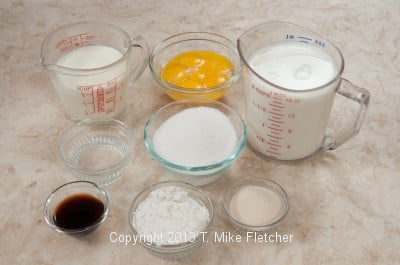
1 ½ tablespoons cold water
2 ⅔ cups milk
8 egg yolks
1 cup sugar (200 grams or 7 ounces)
6 tablespoons flour (60 grams or 2 ounces)
2 teaspoons vanilla
1 cup 40% or heavy cream.
Stir the gelatin in the cold water. Set aside.
Heat the milk in a small pan. 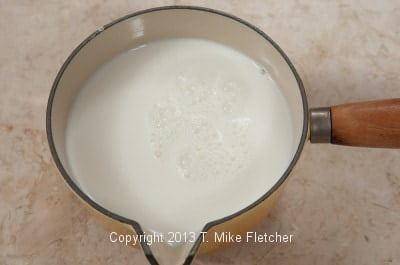
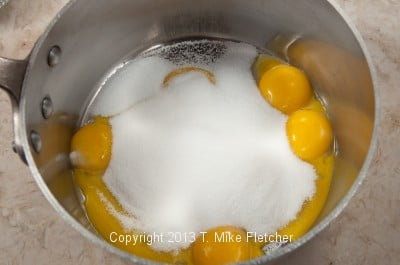
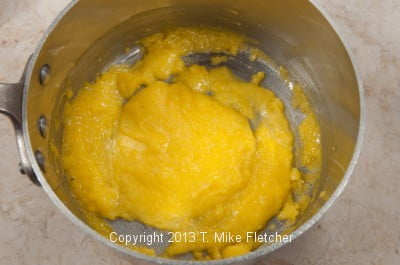
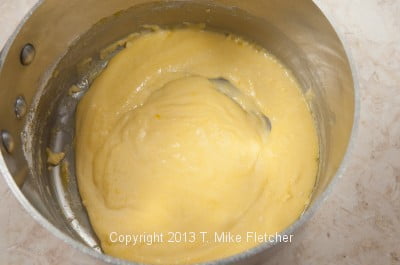
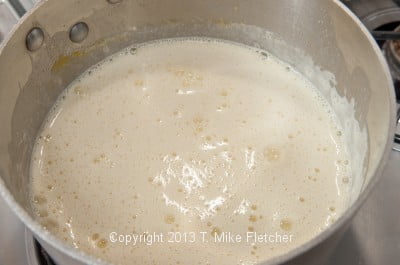
Tear the gelatin into small pieces and add to the pastry cream. There is no need to heat it first. The hot cream will melt it.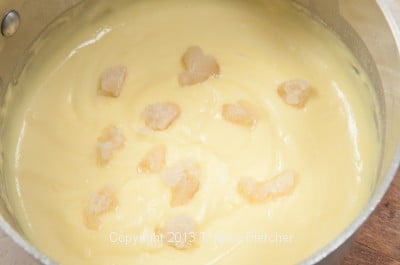
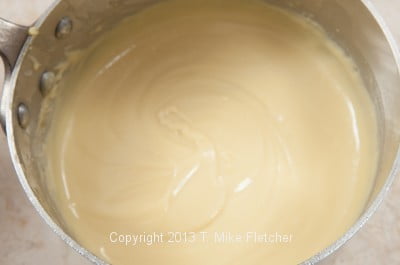
Pour in into a bowl and refrigerate overnight or up to 4 days ahead. The pastry cream can be frozen at this point. Thaw in the refrigerator overnight to use.
Basic Chou Paste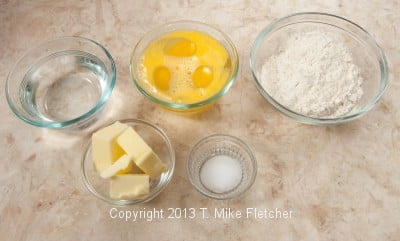
4 tablespoons butter (60 grams or 2 ounces)
¼ teaspoon salt
¾ cup sifted bread flour (100 grams or 3 ½ ounces)
3 whole eggs
1 ½ tablespoons beaten egg (½ of the beaten egg)
Preheat the oven to 400 degrees. Prepare two baking sheets with parchment paper. Draw a 10-inch circle on one piece of parchment. Set aside.
Combine the water, butter, and salt in a small, heavy saucepan.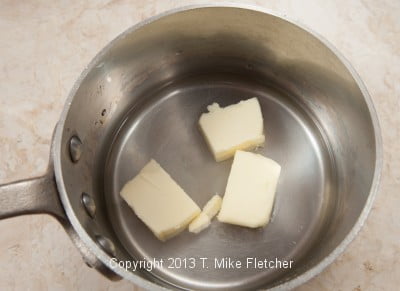
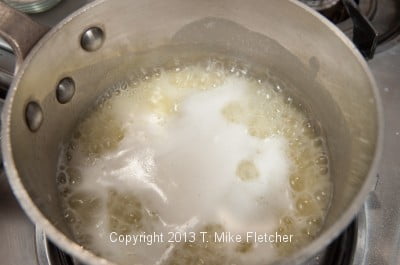
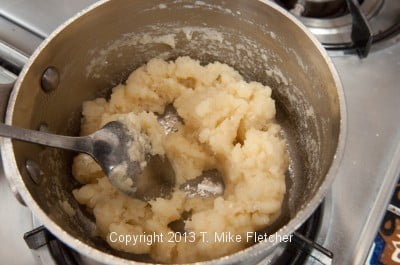
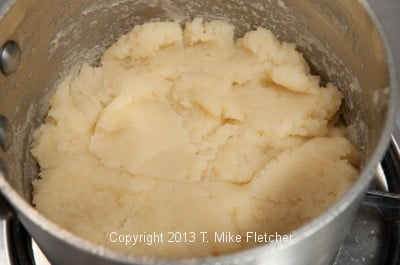
Place the panade in a food processor 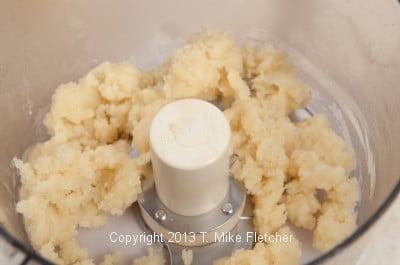
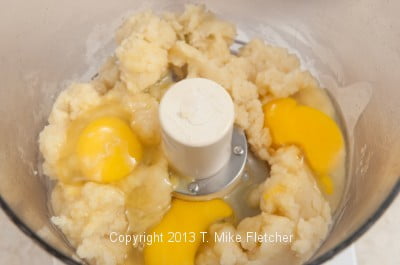
At this point, gently wad up the parchment and soak in warm water for 5 to 7 minutes. When finished, gently shake off some of the water, but not all of it. Place on the baking sheet. 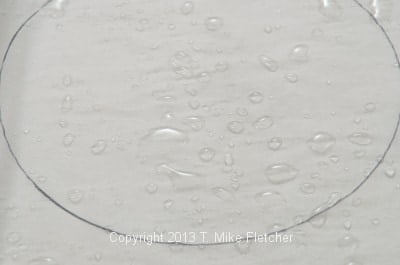
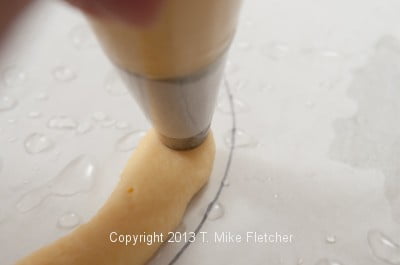
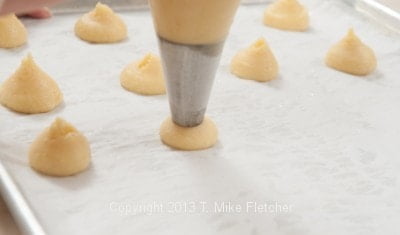
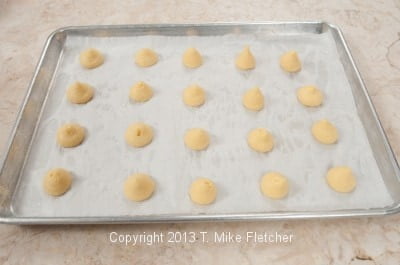
Pate Brisee a l’Oeuf
¾ cup sifted all-purpose flour (85 grams or 3 ounces)
⅓ cup sifted cake flour (35 grams or 1 ¼ ounce)
½ teaspoon salt
7 tablespoons butter, cut in small pieces and refrigerated (105 grams or 3 ½ ounces)
2 tablespoon beaten egg
1 teasoon lemon juice
2 tablespoons ice water
Preheat oven to 375 degrees. Line a baking sheet with parchment paper.
In a processor bowl fitted with the steel blade, combine the flours and salt; process briefly to mix. 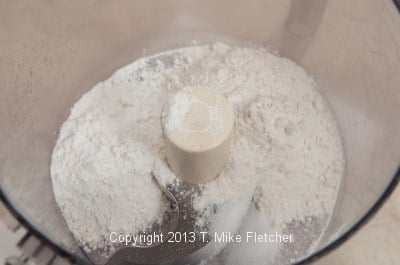
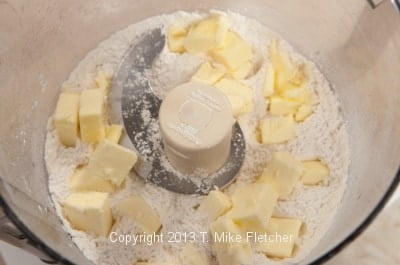
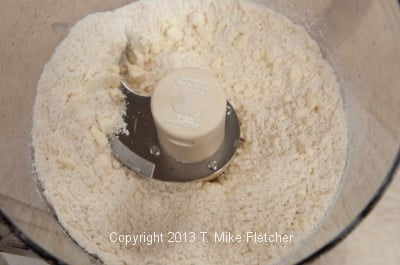
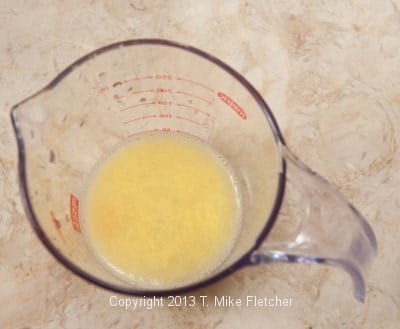
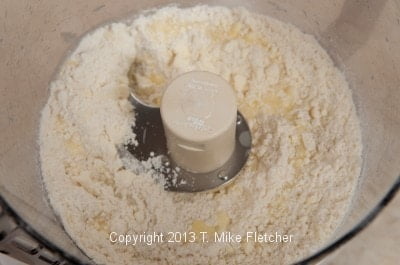
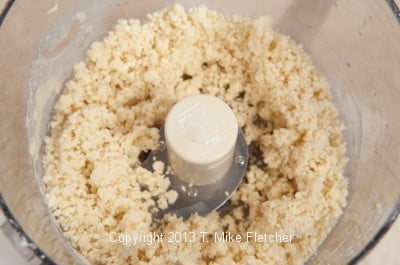
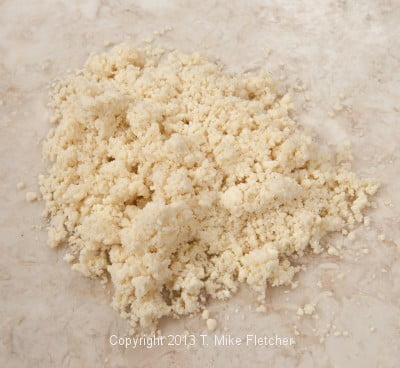
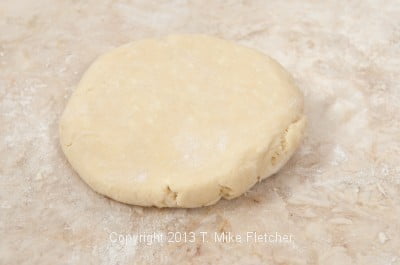
Roll into a round about 11 inches. Trim the dough into a 10 ½ inch round.
Place on a parchment lined baking sheet, dock with a fork and refigerate about 30 minutes or until it is firm.
Bake for 20 to 25 minutes until golden, firm and crisp. Cool completely.
Assembly of the Gateau St. Honore
Pate Brisee Base
Chou Ring and Puffs
Pastry Cream
1 cup heavy cream
Lightened Pastry Cream
When ready to use whip the cream in the bowl of a mixer to stiff peaks. 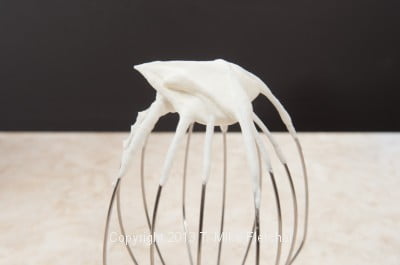
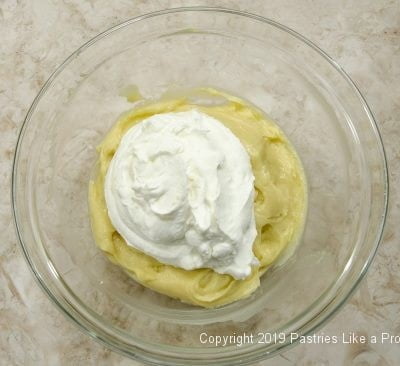
Place the pate brisee base on a 10 inch round. Set aside.
Fit a pastry bag with a #2 plain tip. Make a hole in the bottom of each puff with a toothpick or cake tester. 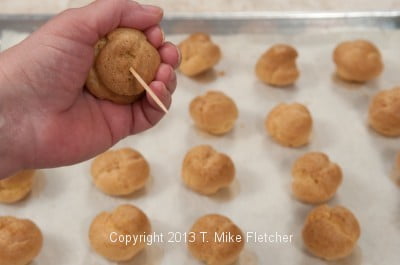


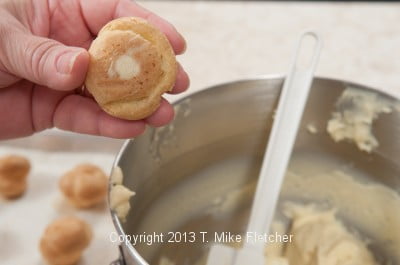
Make the caramel below.
Caramel
½ cup water
2 cups sugar
Place the water in a small saucepan. Add the sugar. 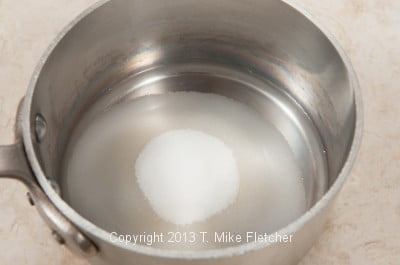
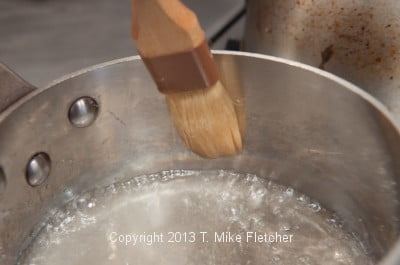
With a spoon dipped in the hot caramel, drizzle caramel around the edges of the pate. 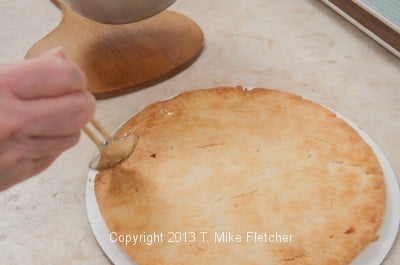
Quickly and very, very carefully dip the bottom of a small puff in the caramel and place it on the ring. 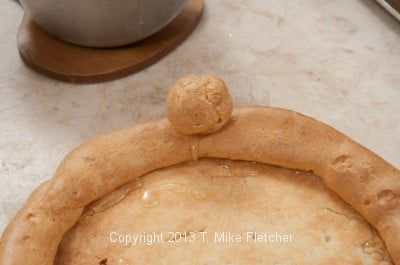
Finishing the Gateau St. Honore
¼ cup water
1 cup sugar
Place in a small saucepan. Prepare as above for the Caramel. However, this time take it to dark amber. 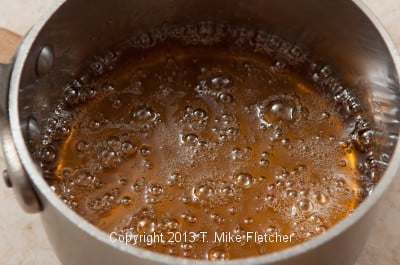
Caramel will most likely flow inside the shell. That is fine. Fill the inside of the ring halfway up with pastry cream. 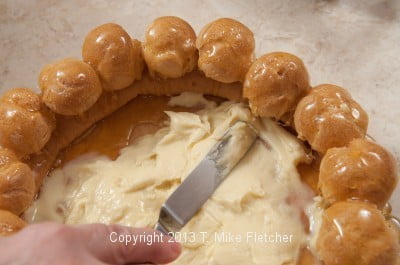
If you wish to finish the Gateau St. Honore with spun sugar, repeat making the caramel if it has set up too much. Let it get a deep amber and dip a spoon or fork into the hot caramel and wave it over the puffs on the edge of the Gateau St. Honore.
This should be refrigerated for a few hours before serving.
This classic Gateau St. Honore has a lot of moving pieces and you should be very proud of yourself for having completed it
Other versions you might enjoy looking at include:
https://www.joepastry.com/2011/making-gateau-st-honore/
https://www.foodnetwork.com/recipes/gateau-st-honore-recipe.html


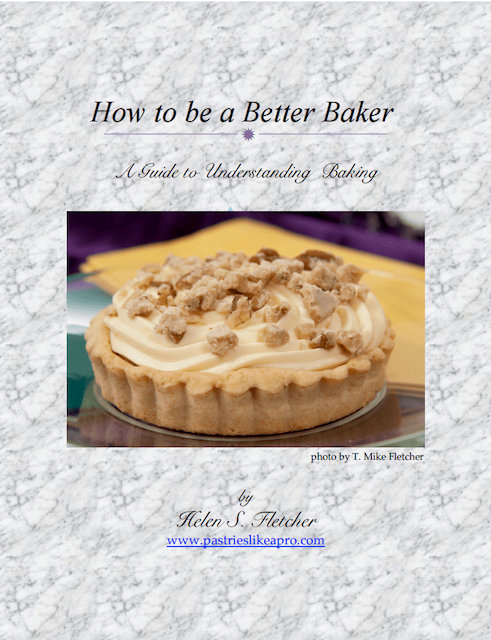
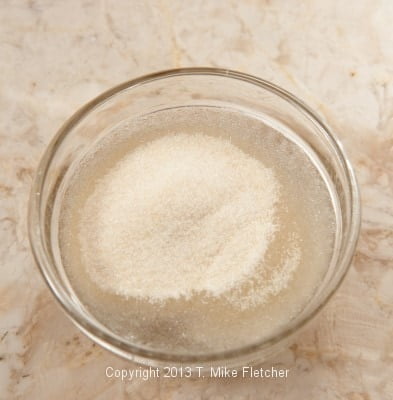
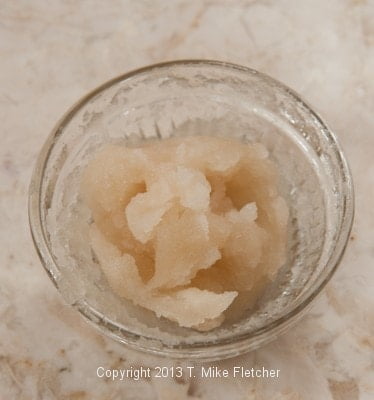
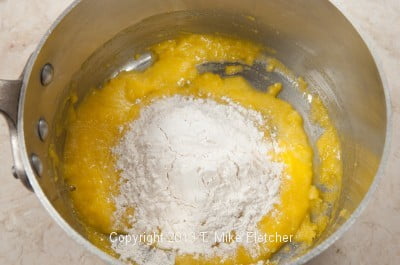

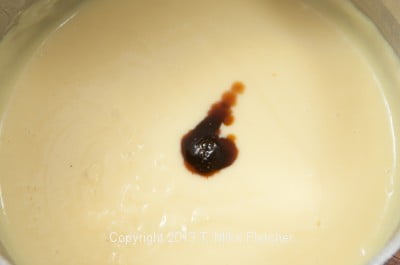
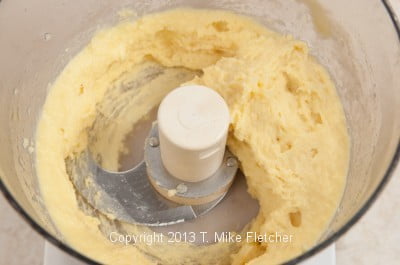
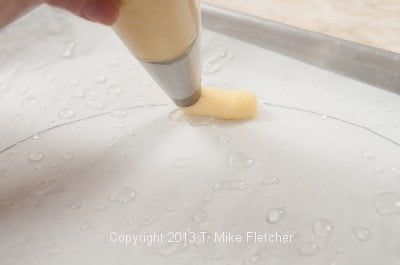

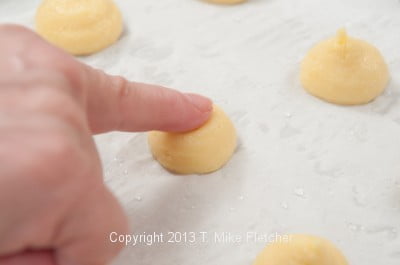
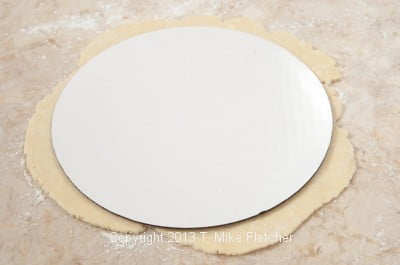
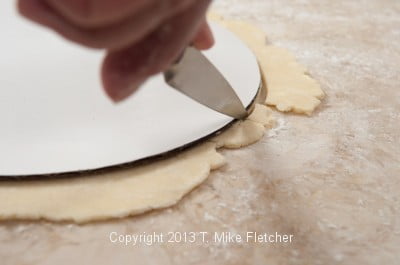
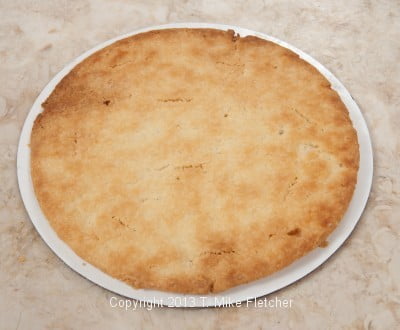
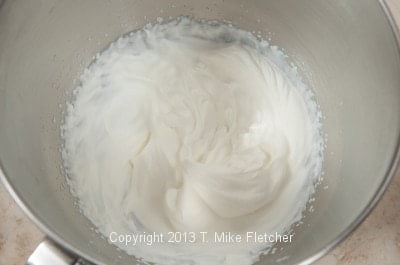
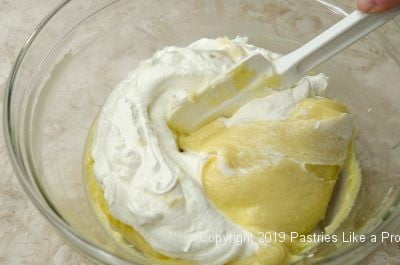
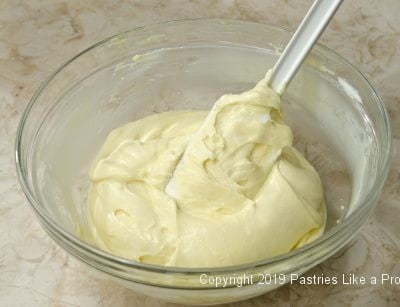
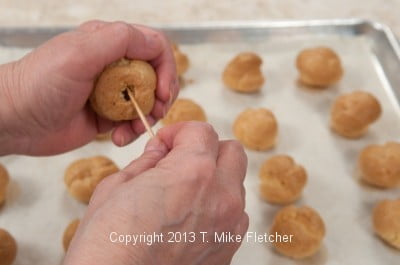
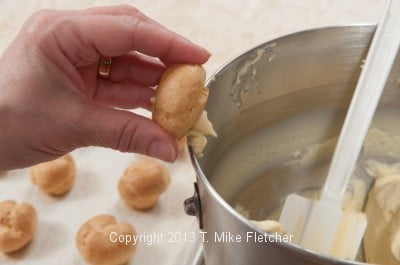
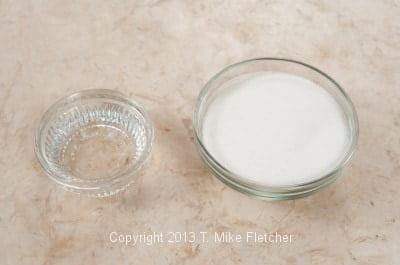
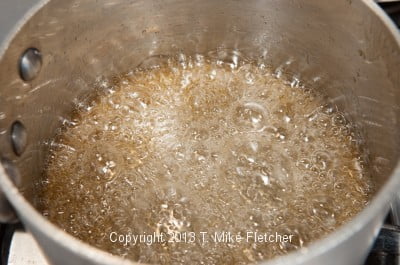
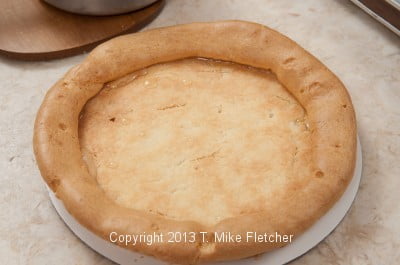
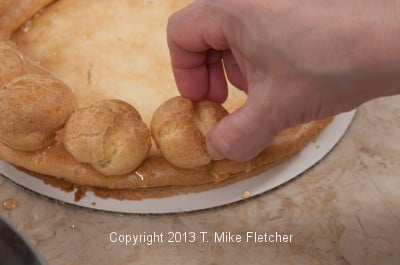
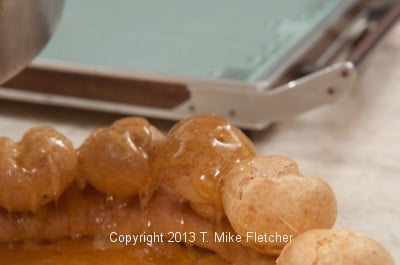
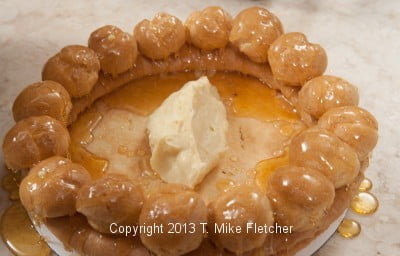
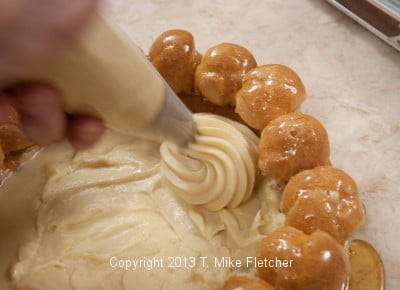
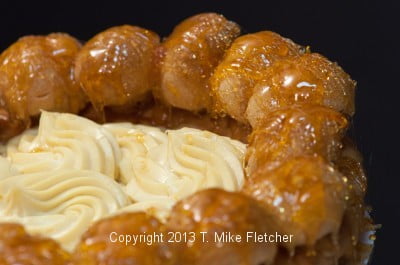

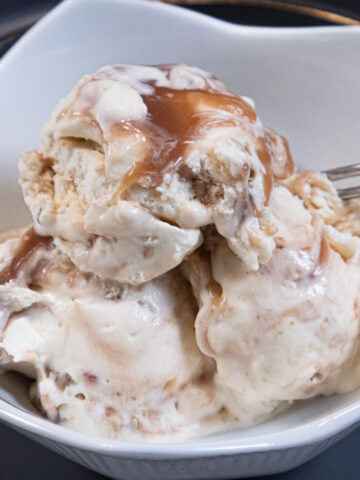
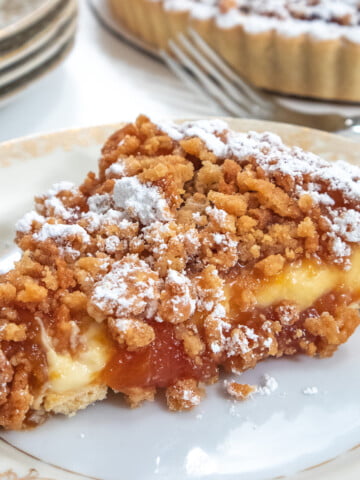
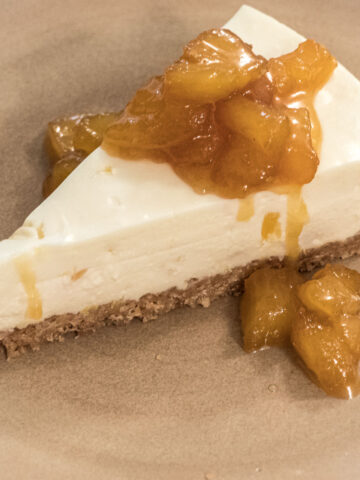
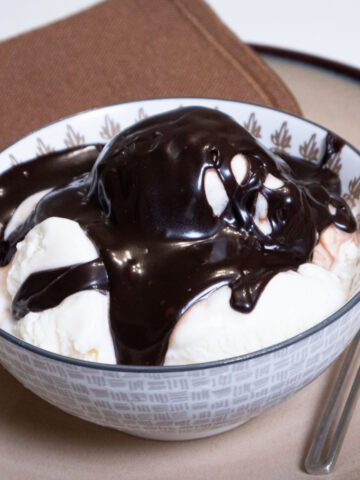
Daniel M. Pliska says
Interesting tip with the soaked parchment paper. Thanks for sharing!
hfletcher says
You're welcome Daniel.
manisha says
Hi Helen,
What a perfect timing of this recipe! These days choux is on my mind :) I recently made Paris Brest and was planning to make one yours savory recipes with mushrooms filling from The New Pastry Cook. Will surely give this a try. It looks super cool :)
hfletcher says
Good Morning Manisha - This looks like a lot of work, but it can easily be broken down into several days. The pastry cream and pate brisee can be made a couple of days ahead so the chou and assembly go quickly. It is a wonderful treat. I actually had a client who bought these at the bakery. Think you will enjoy it. I love anything with mushrooms.